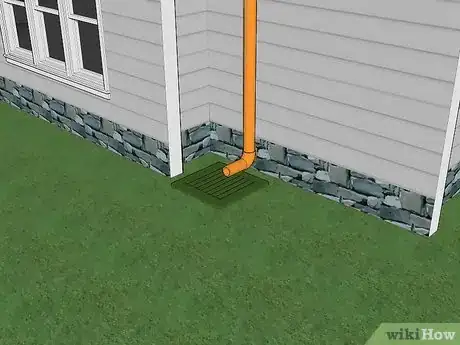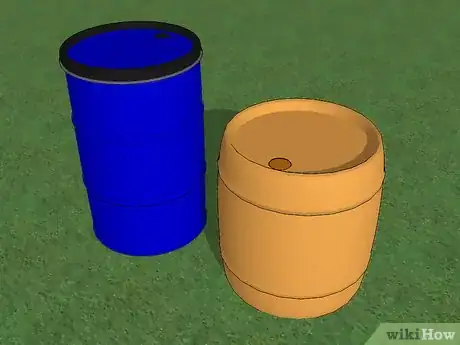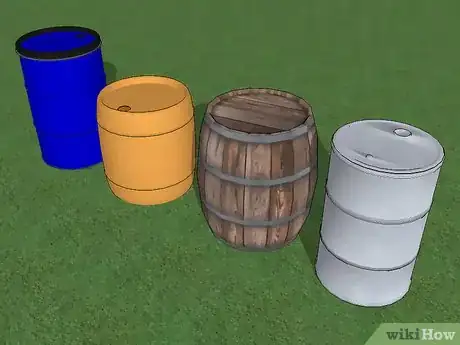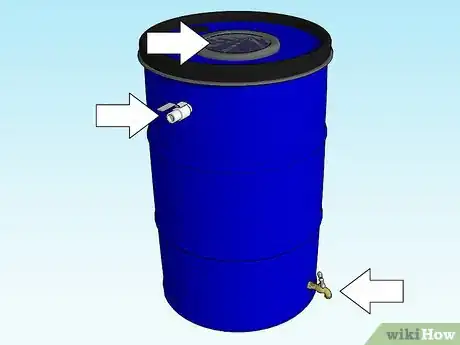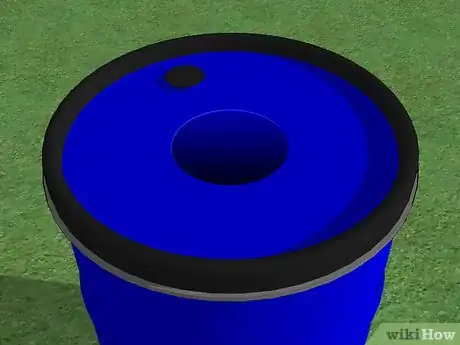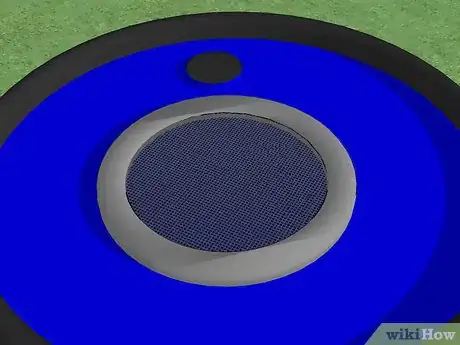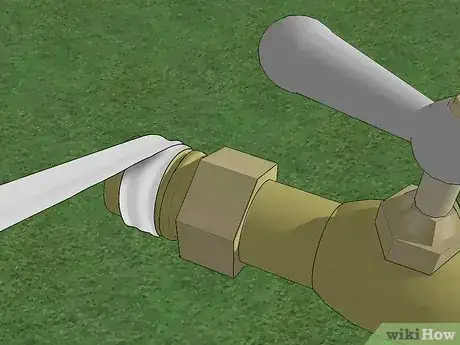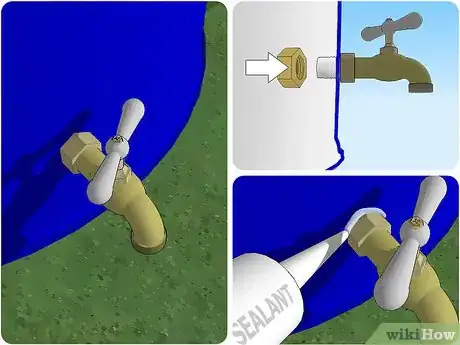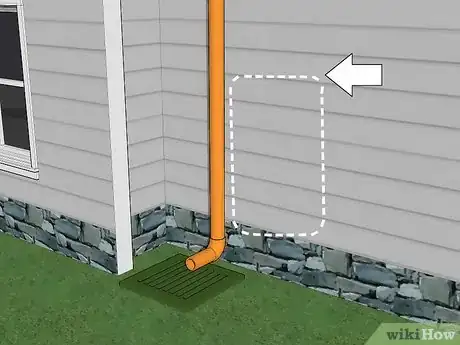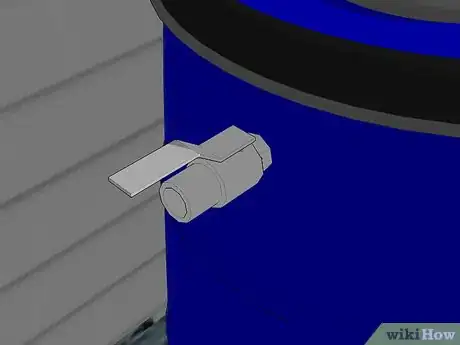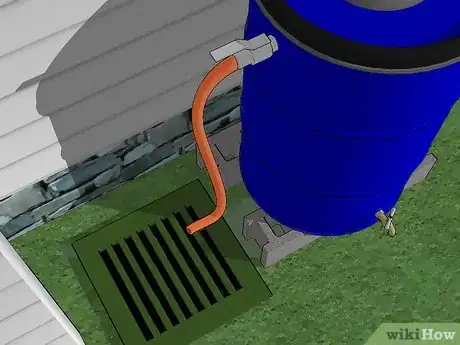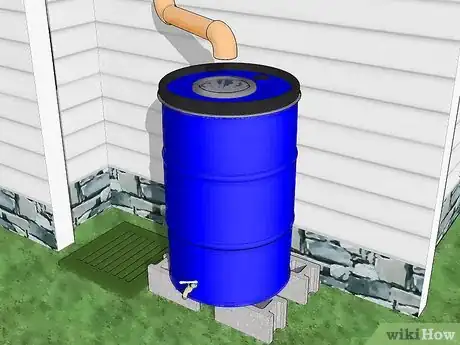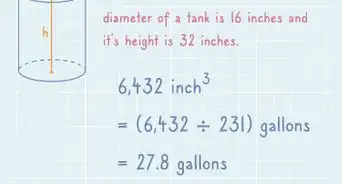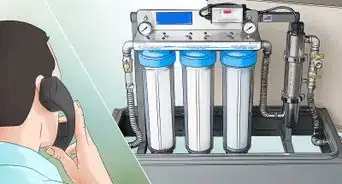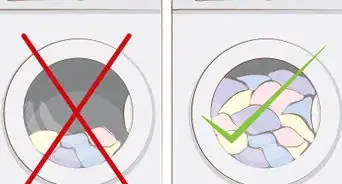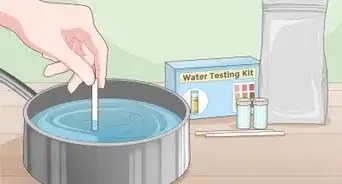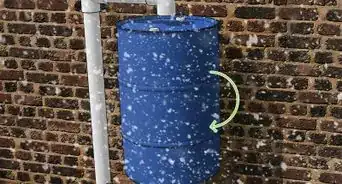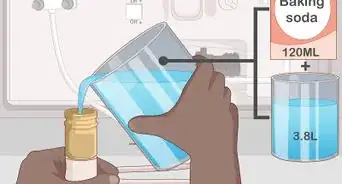This article was co-authored by Anthony "TC" Williams. Anthony "TC" Williams is a Professional Landscaper in Idaho. He is the President and Founder of Aqua Conservation Landscape & Irrigation, an Idaho Registered Landscape Business Entity. With over 21 years of landscaping experience, TC has worked on projects such as the Idaho Botanical Garden in Boise, Idaho. He is a Idaho Registered Contractor and a previously Licensed Irrigator in the State of Texas.
There are 7 references cited in this article, which can be found at the bottom of the page.
wikiHow marks an article as reader-approved once it receives enough positive feedback. In this case, 92% of readers who voted found the article helpful, earning it our reader-approved status.
This article has been viewed 62,388 times.
Want to save water and have more water to use to create a healthier lawn or garden? A rain barrel is a way to collect some of the rainwater that lands on your house so you can use it later. While rainwater is not recommended for cooking or drinking, it can be used to water plants or to wash your vehicle. The basic principle is to attach a barrel to one of the downspouts on your home, and use a spigot to access the collected water. A rain barrel can be set up with basic items available at your local hardware store. The time and money it takes to put a rain barrel together is well worth the long term financial and environmental savings that will come from having this handy tool in your yard.
Steps
Planning and Preparation
-
1Set up your rain barrel in the right spot. You will usually be placing your barrel under, or attached to, one of your existing downspouts. However, you need to ensure that the rain barrel uses a diverter or has an overflow to get rid of water pooling at your home's foundation. If it's possible, extend the downspout piping to a location for the barrel that is a few feet away from the house to avoid overflow saturating the foundation.
- A full rain barrel can weigh more than 400 pounds, so make sure you don't place it on anything that can't take this weight, or where it might do damage if knocked over.
- Keep the barrel as low as possible for more stability, placing it on a wide, solid base. Secure ratchet strap(s) around the barrel and anchor them firmly to either the house or two ground anchors, placing the straps in an 'X'. Tightly pull the straps downward to add stability. Posts could also be placed into the ground to serve as a backstop and anchor for the barrel.
-
2Determine how large the barrel should be. This will depend on the size of your property, but the standard size is 55 gallons (208.2 L).[1]Advertisement
-
3Choose the right material. You can use plastic, rubber, or even wood. Metal can be used but is often not recommended.[2] Just make sure your material is sealed and treated to hold water for a long time without leaking, rusting, rotting or decaying chemicals into the water.
- Look for food grade barrels that are sold new or even used from restaurants, food distribution centers, commercial food processing plants, and similar businesses.
- There are 3 types of plastics that are very harmful to humans and should be avoided. You can identify them by their recycling number. The numbers to look for include #3 Polyvinyl Chloride (PVC), #6 Polystyrene (PS), and #7 Polycarbonate.[3]
-
4Clean the inside of the barrel. This may not be a big deal if your barrel is new, but make sure you remove any debris that may be left inside. Start by washing it well with warm water and dish soap, scrubbing the sides if needed. Dump the soapy water and rinse it well. Then sanitize the barrel using unscented household bleach diluted with water.
- Mix 1 teaspoon (5 ml) of bleach into 1 quart (.94 liter) of water or 4 teaspoons (20 ml) of bleach into 1 gallon (3.8 liter) of water.
-
5Know what to expect. A rain barrel is just a barrel with a hole in the top or side allowing water to enter from the downspout. It can have a filter or closed system to keep out debris and mosquitoes. It always has a spigot and/or drain valve near the bottom to connect a hose to or fill a bucket from.
- The rain barrel should also have a way to control overflow with proper drainage so it doesn't saturate the ground near the barrel or seep into the house's or building's foundation.
Making the Water Intake Hole
-
1Use a jigsaw to cut a hole in the top of the barrel. The hole should be large enough to accommodate the rainwater flowing into it from out of your rain spout.[4] A four to six inch diameter circle is a good place to start, or however large you need to accommodate your skimmer basket.
- If the top of your barrel is thinner, you can also just use an exacto-knife.
-
2Position the skimmer basket or screen. You want to make sure that leaves, sticks and other debris, as well as bugs and animals don't get into your barrel.
- For this you can secure a screen over the intake hole (or simply cover the entire top of the barrel and put the top back on). Make sure you use stainless steel or another rust proof material. Don't use anything with gaps big enough to let in mosquitoes.
- You can also set a special skimmer basket into the intake. A skimmer basket doesn't block as easily and can be removed to toss out collected debris and make maintenance easier.
Creating the Spigot
-
1Drill a hole for the spigot. It should be as close to the bottom of the barrel as possible, with the stand leaving you enough room to fill a bucket under it. Use an electric drill. A 3/4th inch hole should be right to fit most hose-compatible spigots. But pick your spigot before you decide what size hole to make.[5]
- A common hose bib type spigot can be used, either in 1/2 (1.27 cm) or 3/4 inch (1.9 cm).[6]
-
2Wrap tape around the upper threads of the spigot. Teflon tape is a good choice to make sure your spigot is watertight on the threads.[7]
-
3Insert the spigot onto the barrel and seal around it. Screw your spigot into your hole and secure it to the barrel with a properly sized washer. Use a plumbers putty for sealant between the barrel and spigot.Then seal over the edges around the spigot with waterproof sealant.
Making a Stand
-
1Determine how high the raise the rain barrel. You need to get your barrel close enough to the bottom of the downspout and have enough room under the spigot to fill a barrel.
-
2Create a stand from cinder blocks. Four cinder blocks set next to each other should do the trick on flat ground. You can also use loose bricks if you place them partially dug into the ground or secure them together to create a stable base that is wider than the barrel. Make sure your stand is completely stable—you don't want your barrel to tip.
-
3Put your barrel on the stand. Attach or remove the bottom end of your downspout so you can set your barrel under it. You may need to adjust your downspout and even add curved sections of gutter piping to get it properly positioned.
-
4Sit the barrel on the stand. Make sure it sits secure and stable and doesn't tip around. Turn it so the end of your house's downspout flows down into the intake.
Preparing the Overflow Valve or Using a Diverter
-
1Drill a hole in the side toward the top of the barrel. About two inches should be good. When the barrel fills up, you need an overflow valve to let water run out in a controlled way instead of bubbling out the top.
-
2Screw in and secure your valve. As with the spigot, use tape and washers to lock and seal it in place.
-
3Create an overflow system to prevent flooding. Attach a hose to the valve and direct the hose to run into a ditch or other proper drainage near your house. This will keep your yard from flooding when water starts spewing out of your barrel.[8]
- You can also run the hose into a second rain barrel. This way when the first fills up, the water just flows into the next one. But eventually you will need to have a barrel that drains properly.
-
4Alternatively you can simply use a diverter. A downspout diverter attaches to the downspout and the rain barrel. Once the rain barrel is full, water continues down the downspout, eliminating any chance of overflow.[9]
Warnings
- Drain the barrels occasionally during periods of no rainfall, as the stagnant water could begin to smell over a length of time.⧼thumbs_response⧽
- Check your rain barrel often to guarantee the lid is securely fastened and clear away leaves and debris from your intake. Open containers of water are dangerous for children and animals. Fatalities from drowning can occur in only a few inches of water.⧼thumbs_response⧽
Things You'll Need
- 55 gallon (208.2 L) food grade barrel
- a jigsaw
- a drill
- 29/32" drill bit
- 3/4" bib spigot
- 2 - 3/4" lock nuts
- 2 rubber washers
- 3/4" male hose adapter or second spigot left in the "on" position
- 4 cinder blocks
- Teflon tape
- skimmer basket or screen
- window screen
References
- ↑ https://bizfluent.com/info-tip-8098511-dimensions-55gallon-oil-drum.html
- ↑ https://www.csuci.edu/fs/sustainability/water-conservation/rain-barrel-system.htm
- ↑ https://www.foodpackagingforum.org/news/which-plastic-food-containers-are-safe-to-reuse
- ↑ https://njaes.rutgers.edu/E329/
- ↑ https://www.youtube.com/watch?v=tln2u7LnBg0
- ↑ https://www.youtube.com/watch?v=tln2u7LnBg0
- ↑ "http://cceonondaga.org/resources/how-to-build-a-rain-barrel"
- ↑ http://cceonondaga.org/resources/how-to-build-a-rain-barrel
- ↑ http://cceonondaga.org/resources/how-to-build-a-rain-barrel
About This Article
To make a rain barrel, start by getting a 55-gallon food-grade barrel. Then, cut a hole in the top of the barrel with a jigsaw for the rainwater to pour into, and cover it with a skimmer basket or screen to keep out bugs and debris. Next, drill a hole near the base of the barrel for a spigot, and insert the spigot into it using plumber's putty and a waterproof sealant. Finally, rest the barrel on some cinder blocks under your house's downspout. For more tips from our Landscaping co-author, like how to create an overflow system to prevent flooding, scroll down!
